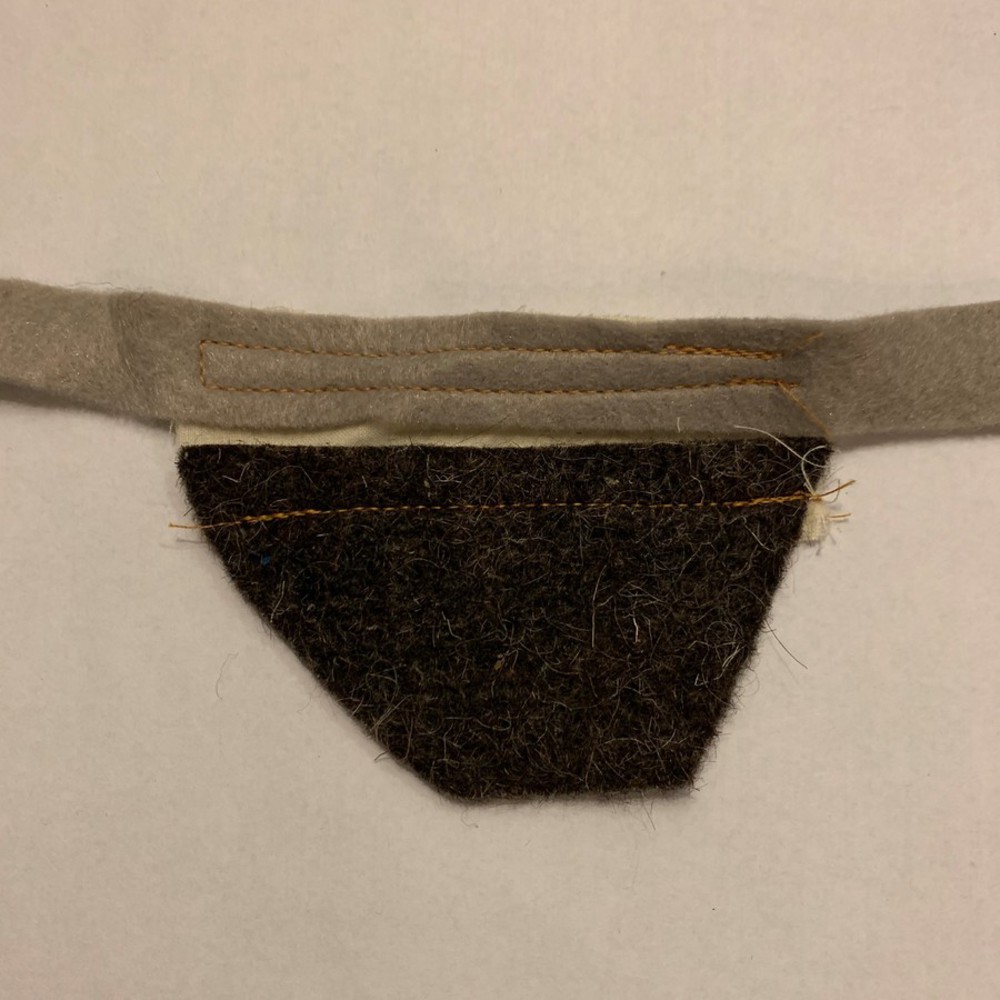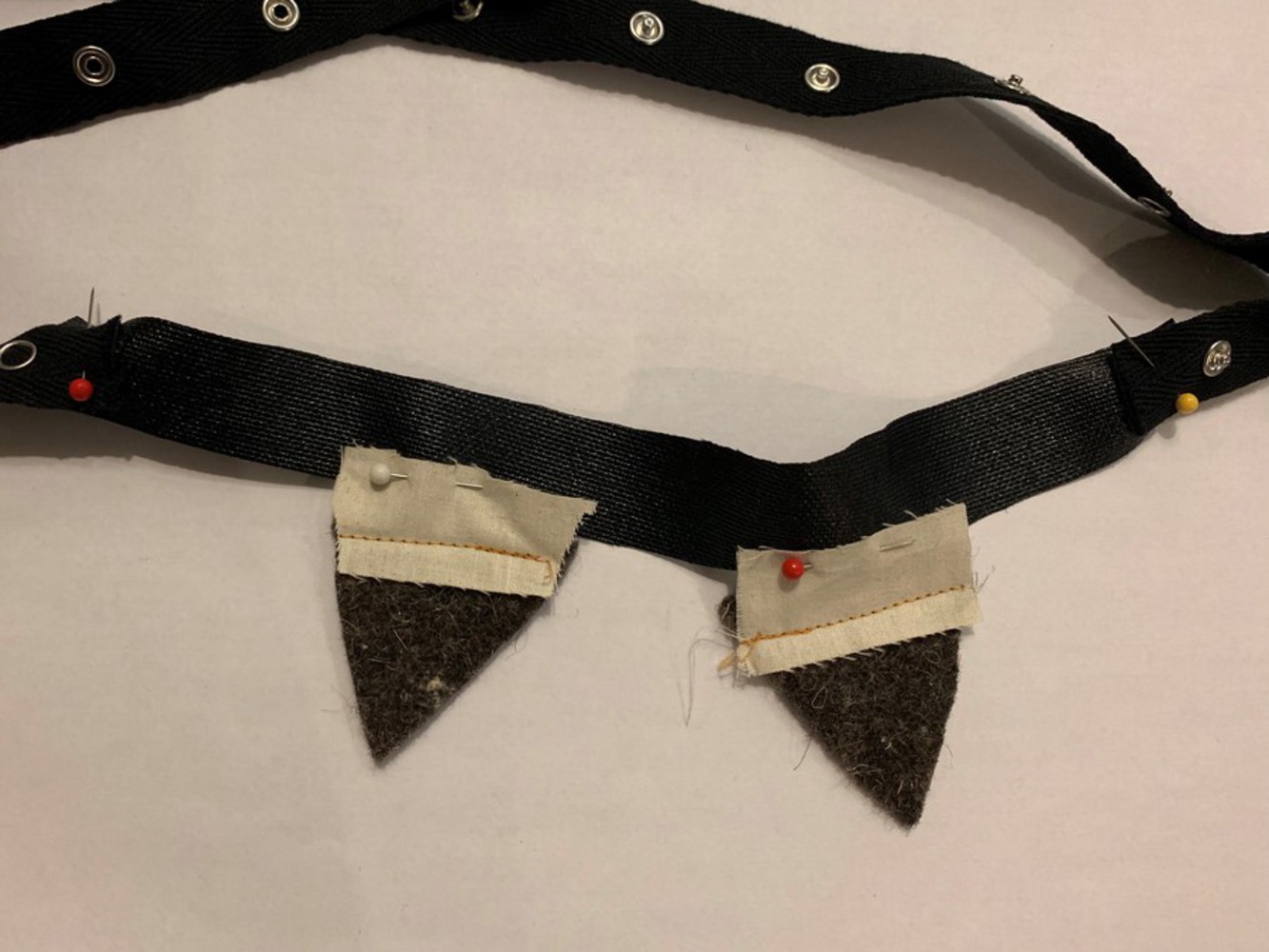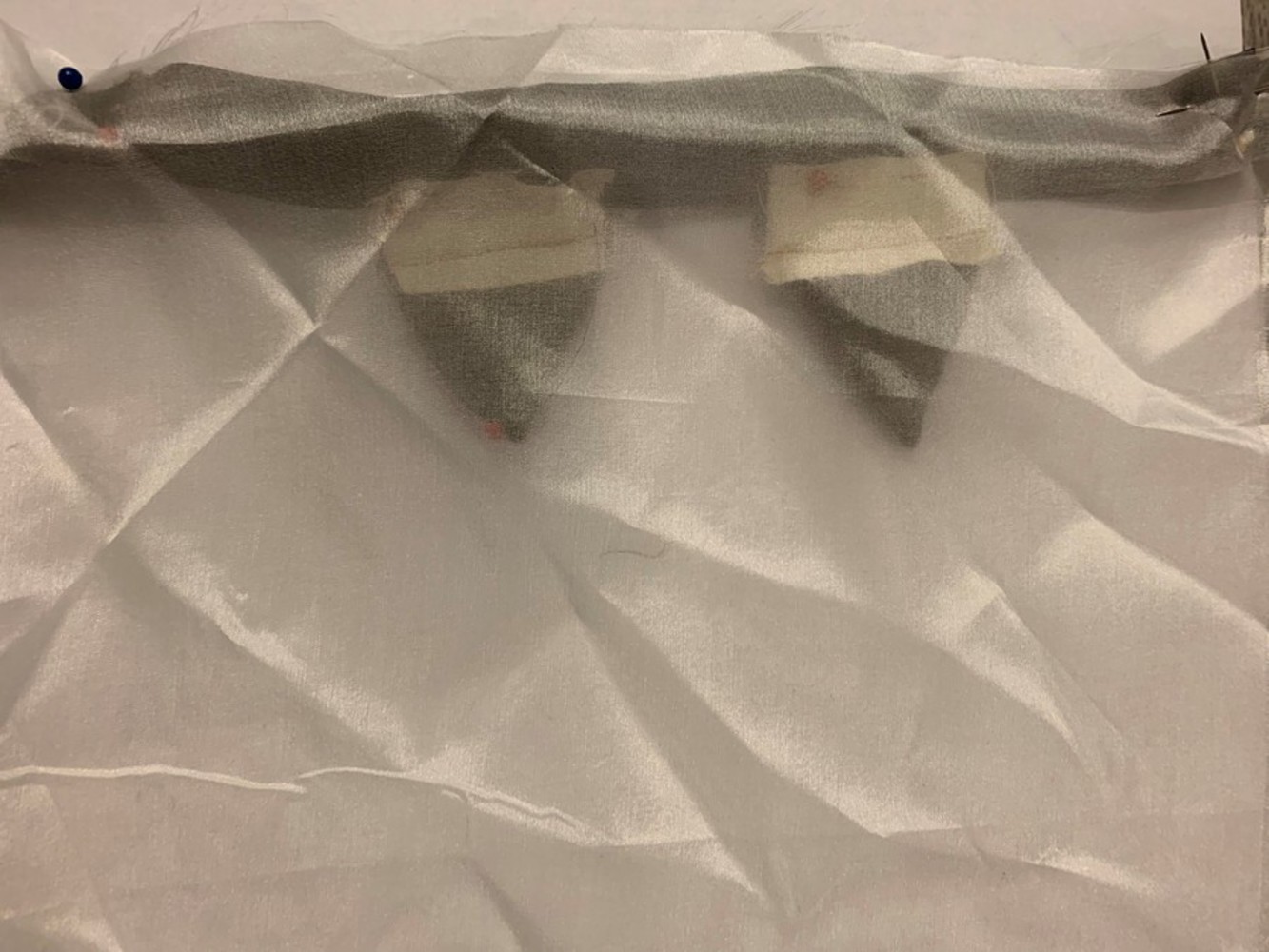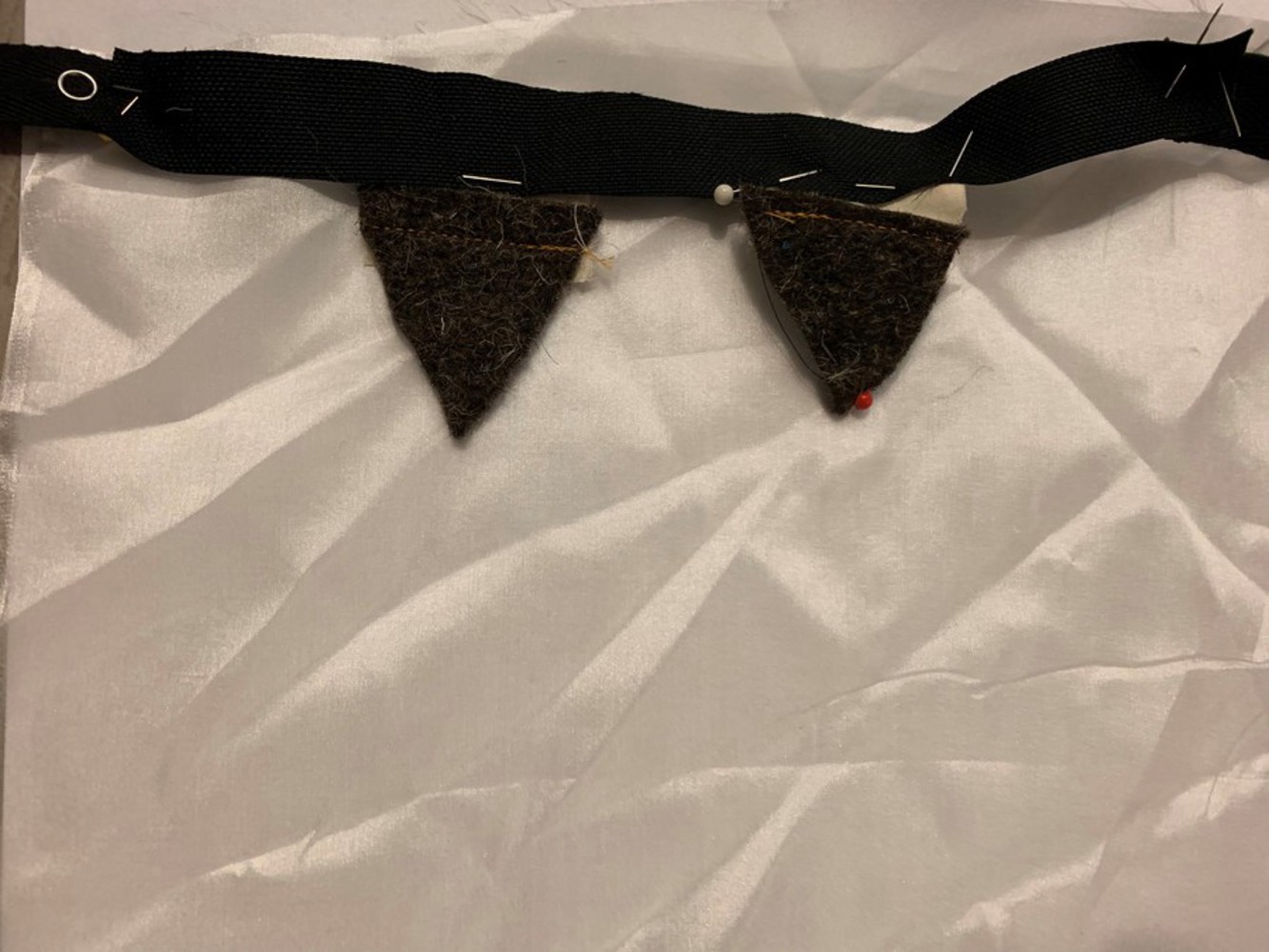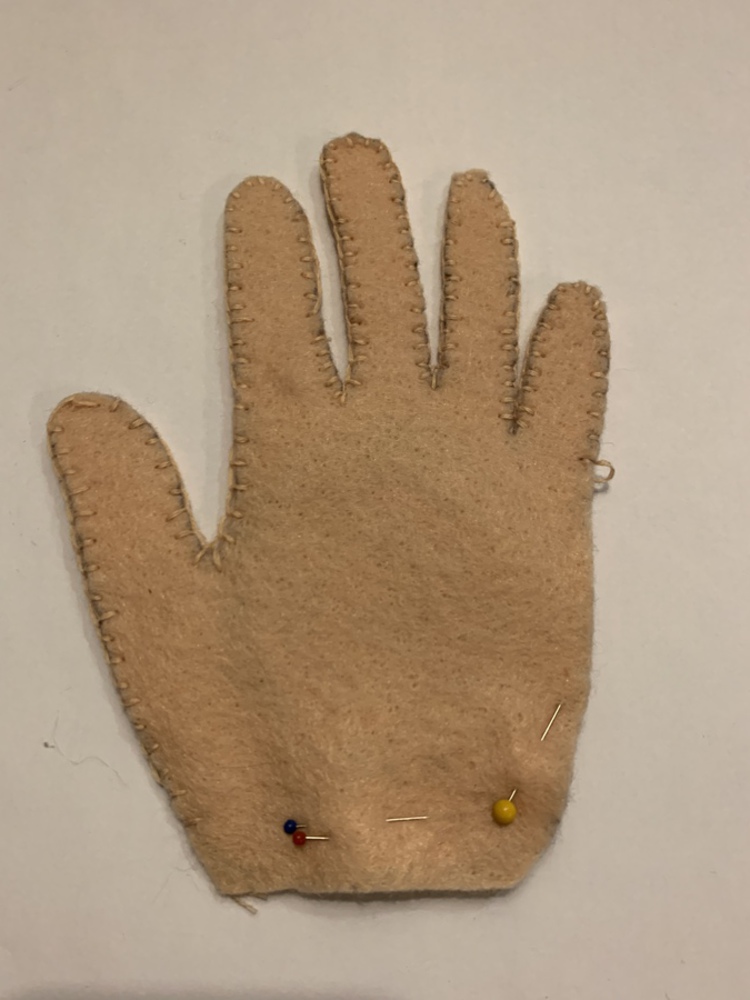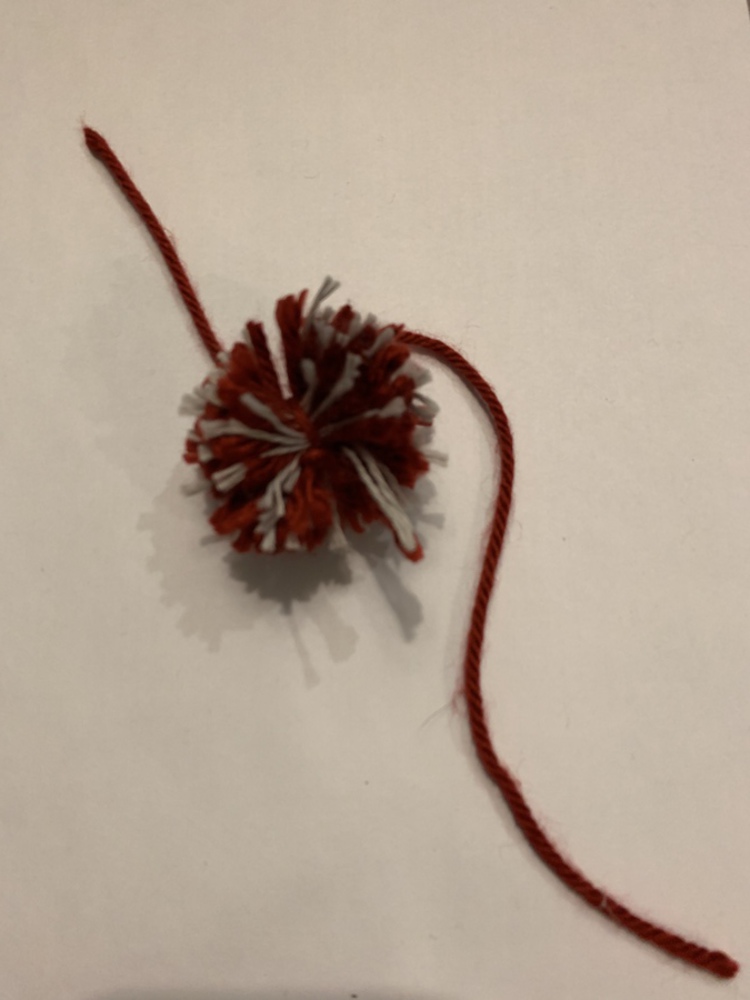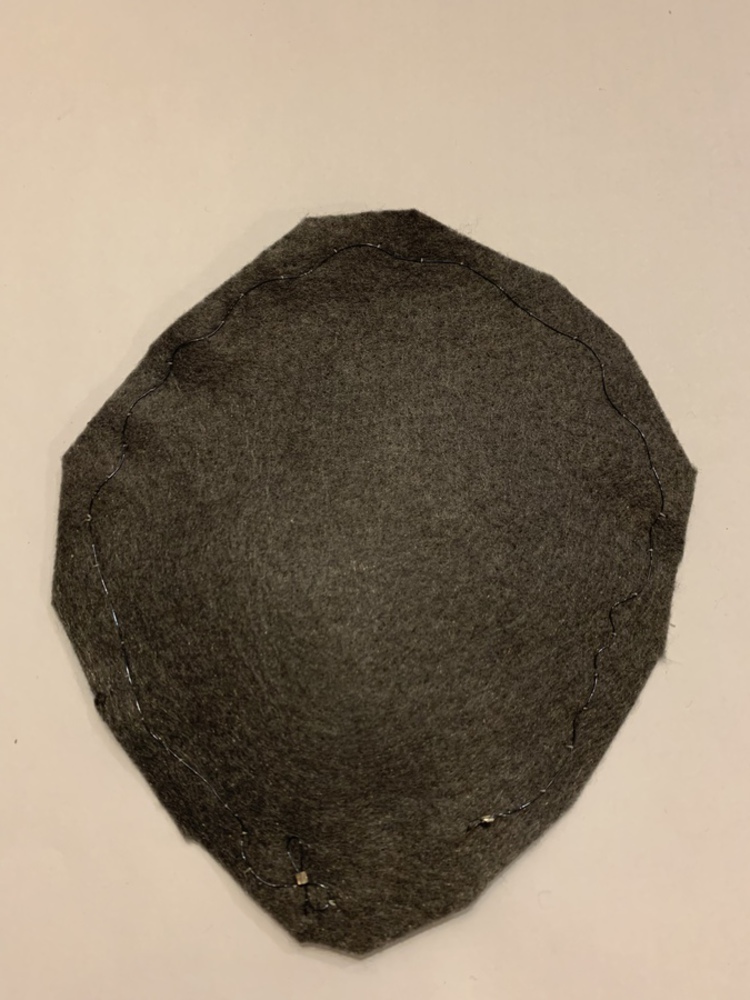Process and/or Research
Outline your approach to the project? What ideas did you generate and how did you refine or reject them? What did you research and explore? What methods or techniques did you use? What tools and technologies were involved?What challenges were encountered and how did you resolve them?
1. Inspired by Di Mainstone and Joanna Berzowska's Scorpions project (http://dimainstone.com/project/skorpions/) which uses muscle wire sewn in 'v' formations to lift small sections of the fabric up. Using this methodology I decided to do a similar formation on the niqab, having multiple 'v' formations on on piece of thicker fabric the center of the niqab (see idea drawing image)
2. After a quick prototype (see prototype 1 image), we realized that it wouldn't be possible to put this on the center, as that's where the nose of the bridge is and it would be really uncomfortable.
3. We realized we had to create 2 pieces that would lift up above either cheek. This lead to creating the next prototype (see prototype 2 image).
4. I coiled and heated the muscle wire and then flattened it and attached it in a 'v' formation on each flap (see muscle wire flap image).
5. I then sewed on the light silk white fabric that should mimic the niqab fabric across the top of the prototype (see Prototype 3 image).
6. We then drew out the electronics needed for this project as the muscle wire requires heat, which in this case would be in the form of a current, to activate and curl it up (see Circuit drawing with equipment image).
7. Next steps involve soldering and assembling the circuit, coding the Gemma, and testing to see if the muscle wire movement is enough to move the triangle flaps up enough to lift the niqab fabric overlay.

